How Your Building Management System Can Beat the Summer Heat: Cooling Efficiency Strategies
In modern architecture and infrastructure, the term Building Management System (BMS) has become increasingly vital. It refers to a centralised control system that oversees and manages various building operations, including heating, ventilation, air conditioning (HVAC), lighting, security, and more. The importance of BMS lies in its ability to enhance operational efficiency, sustainability, and occupant comfort by optimising and streamlining these complex systems.
During the scorching summer months, the role of a BMS in summer heat management becomes paramount. As temperatures rise, buildings face a multitude of challenges, from increased energy consumption to the strain on cooling equipment. This article delves into how a BMS can tackle these issues, helping buildings beat the summer heat with cooling efficiency.
Challenges Faced During Summer and the Significance of Cooling Efficiency
As temperatures soar during the summer, buildings and their occupants face a host of challenges. The importance of implementing cooling efficiency strategies cannot be overstated, as it directly impacts comfort, productivity, and overall well-being.
The most pressing issue caused by high temperatures is the stifling and uncomfortable indoor environment they create. Without efficient cooling, it can be difficult for occupants to concentrate, work, or relax, affecting their productivity and overall comfort.
However, the consequences of ineffective cooling systems go beyond just discomfort. They result in increased energy consumption, leading to higher electricity bills and significant economic implications for homeowners and building managers.
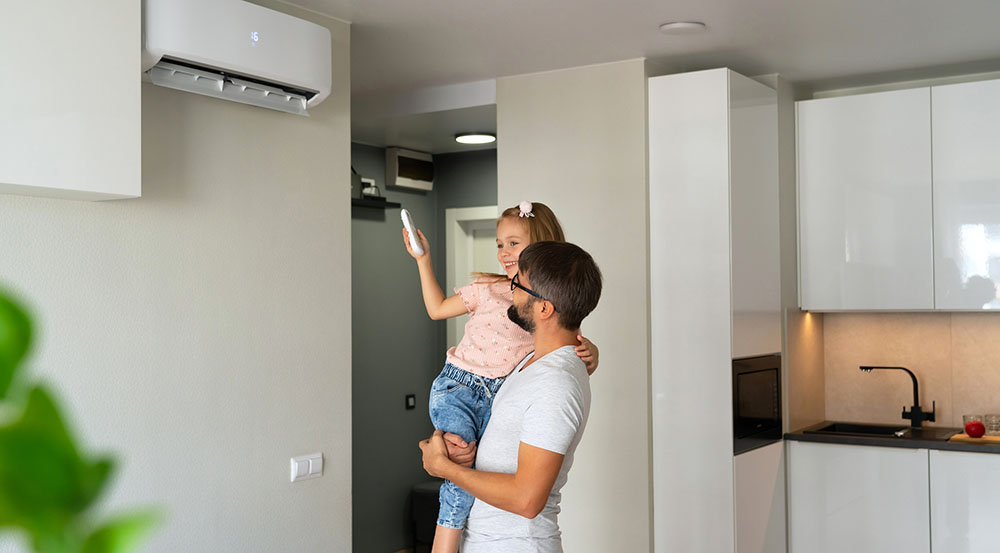
Moreover, inefficient cooling systems contribute to higher carbon emissions, exacerbating the problem of global warming. This further underlines the need for sustainable cooling solutions that promote environmental responsibility.
Building Management Systems (BMS) offer effective solutions to these challenges. In the following sections, we will explore how BMS can help to achieve more efficient and sustainable cooling during the hottest season of the year.
Role of Building Management Systems in Cooling Efficiency
As we recognise the pivotal role of Building Management Systems (BMS) in steering buildings towards optimal cooling efficiency during the sweltering summer, let's now delve into the specific roles that make BMS a linchpin in this endeavour. Each role plays a crucial part in addressing the challenges posed by extreme heat and escalating energy consumption. Join us as we enumerate and explore these roles in detail.
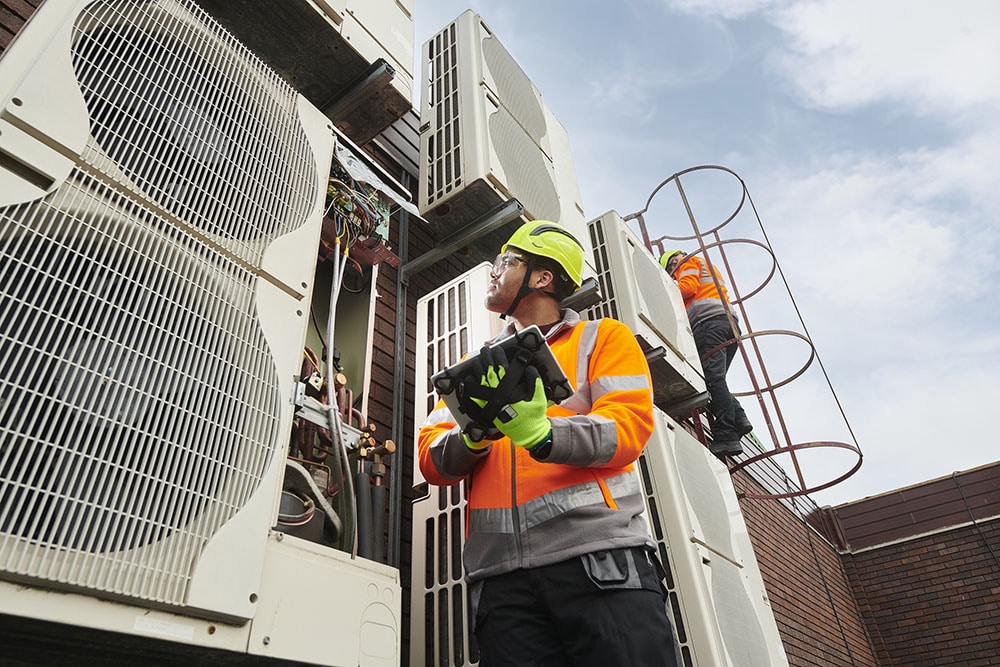
1. Monitoring and Controlling HVAC Systems:
BMS acts as the diligent overseer of HVAC systems, managing heating, ventilation, air conditioning components, and thermostats. Its primary role in enhancing cooling efficiency centres on its ability to continuously monitor and control these vital systems. This vigilant supervision ensures that HVAC equipment operates within defined parameters, enabling the swift identification of inefficiencies or deviations from established standards. By proactively addressing issues, BMS eliminates unnecessary energy waste, preventing the premature wear and tear of cooling equipment. The result is not only energy savings but also an extended lifespan for HVAC systems, leading to reduced maintenance costs and improved overall efficiency.
2. Real-Time Data Analysis:
BMS capitalises on real-time data analysis, processing data collected by various sensors and components throughout the building. This analysis provides a holistic view of current conditions, including temperature, humidity, and occupancy levels. Empowered with this invaluable information, BMS can make informed decisions concerning cooling settings, enabling dynamic adaptation to the changing environment and precise adjustment of cooling operations. For instance, in the event of unoccupied rooms, BMS can promptly optimize cooling settings to conserve energy. Real-time data analysis guarantees that cooling is precisely tailored to the building's immediate requirements, thereby optimising efficiency and comfort.
3. Predictive Maintenance:
BMS offers the valuable feature of predictive maintenance, which helps prevent unexpected breakdowns and costly emergency repairs. By analysing the performance of HVAC equipment, BMS can predict potential issues and schedule maintenance tasks accordingly. This not only ensures the uninterrupted operation of cooling systems but also significantly reduces the risk of inefficiencies that could lead to increased energy consumption. Predictive maintenance keeps cooling equipment in top shape, reducing downtime and preventing unexpected and costly repairs. The result is a more reliable and energy-efficient cooling system.
4. Adaptive Control:
Adaptive control stands as one of the most powerful capabilities of BMS in enhancing cooling efficiency. BMS can dynamically adjust cooling settings based on real-time data, ensuring that energy is not wasted on excessive cooling when it's unnecessary. For instance, during periods of low occupancy, BMS can scale back cooling operations to conserve energy. Additionally, if external weather conditions change, BMS can respond by making temperature adjustments to maintain comfort while avoiding overconsumption of energy. This adaptability is key to balancing comfort and energy efficiency, making BMS an invaluable asset in the battle against the summer heat.
Energy-Saving Strategies Utilising BMS
Building Management Systems (BMS) are adept at implementing a range of energy-saving HVAC solutions tailored to combat the heat of summer, making them invaluable assets for efficient cooling. Here, we'll explore these strategies in more detail:

1. Temperature Control:
BMS excels at precise temperature control, ensuring that the indoor environment remains consistently comfortable without unnecessary extremes. By avoiding overcooling or overheating, BMS strikes a delicate balance that optimises energy usage. It monitors temperature variations, instantly adjusting cooling systems to maintain a steady climate. This meticulous temperature regulation is a fundamental strategy in reducing energy consumption. By preventing the cooling systems from working harder than necessary, BMS not only keeps occupants content but also minimises energy waste, leading to substantial cost savings.
2. Scheduling:
Scheduling is another indispensable tool in BMS's energy-saving arsenal. BMS can orchestrate cooling operations to align with the ebb and flow of building occupancy. During periods of low-traffic hours or when certain areas of the building are unoccupied, BMS can intelligently reduce cooling efforts, avoiding the expenditure of energy on spaces that don't require it. This strategy not only conserves energy but also contributes to the longevity of cooling equipment by reducing wear and tear. By adapting to the building's occupancy patterns, BMS ensures that resources are deployed efficiently, ultimately leading to significant energy savings and reduced operational costs.
3. Demand Response:
Participation in demand response programs is a proactive approach to energy conservation, and BMS excels in this area. During peak demand periods when the strain on the electrical grid is at its highest, BMS can play a pivotal role in reducing a building's energy consumption. Through real-time monitoring, BMS identifies these critical periods and can automatically curtail non-essential cooling operations or adjust settings to lower energy usage. By doing so, BMS not only eases the load on the grid but also earns incentives for the building owner. Demand response not only contributes to cost savings but also supports grid stability and sustainability.
Optimising HVAC Systems with BMS
The optimisation of HVAC systems through the use of BMS represents a critical aspect of ensuring efficient cooling during the hottest months of the year. BMS takes on the role of a conductor in this orchestration, harmonising the various components of HVAC systems to achieve not only occupant comfort but also remarkable energy efficiency. Let's explore how BMS achieves this:
1. Thermostat Control:
At the heart of HVAC systems lies the thermostat, a key player in maintaining indoor temperature and comfort. BMS assumes control of these thermostats, ensuring that they work in unison to achieve consistent and optimal temperature settings throughout the building. By regulating the thermostats based on real-time data and occupant preferences, BMS eliminates temperature fluctuations and prevents overcooling or overheating. This fine-tuned control optimises energy consumption, keeping it in check without compromising comfort.
2. Air Quality Monitoring:
In addition to temperature regulation, BMS actively monitors air quality within the building. This includes tracking factors like humidity levels, the presence of pollutants, and the circulation of fresh air. BMS uses data from sensors to make real-time assessments of air quality, ensuring that the indoor environment remains healthy and comfortable. By maintaining good air quality, occupants are not only more comfortable but their overall well-being is safeguarded. Moreover, this focus on air quality minimises the strain on the HVAC system, as it doesn't have to work harder to compensate for poor air quality.

3. Ventilation Management:
Effective ventilation is crucial for maintaining a comfortable indoor environment and for energy efficiency. BMS takes charge of ventilation systems, ensuring that they operate at the right capacity to maintain air quality without unnecessary energy expenditure. By managing the timing and intensity of ventilation, BMS ensures that fresh air is exchanged efficiently, contributing to occupant comfort while saving energy. Additionally, during periods of lower occupancy, BMS can reduce ventilation rates, further conserving energy.
4. Coordination and Seamless Integration:
Perhaps one of the most vital roles of BMS in HVAC optimisation is its ability to ensure the seamless integration of these complex systems. HVAC components, from chillers and boilers to air handlers and fans, often work together to maintain the desired temperature. BMS serves as the central coordinator, ensuring that these systems operate in perfect harmony. When various HVAC components work together seamlessly, the system operates at peak efficiency, reducing energy consumption and wear and tear on the equipment. This coordination extends the lifespan of HVAC systems, reducing maintenance costs and enhancing their overall performance.
Smart Building Technologies and Cooling Efficiency
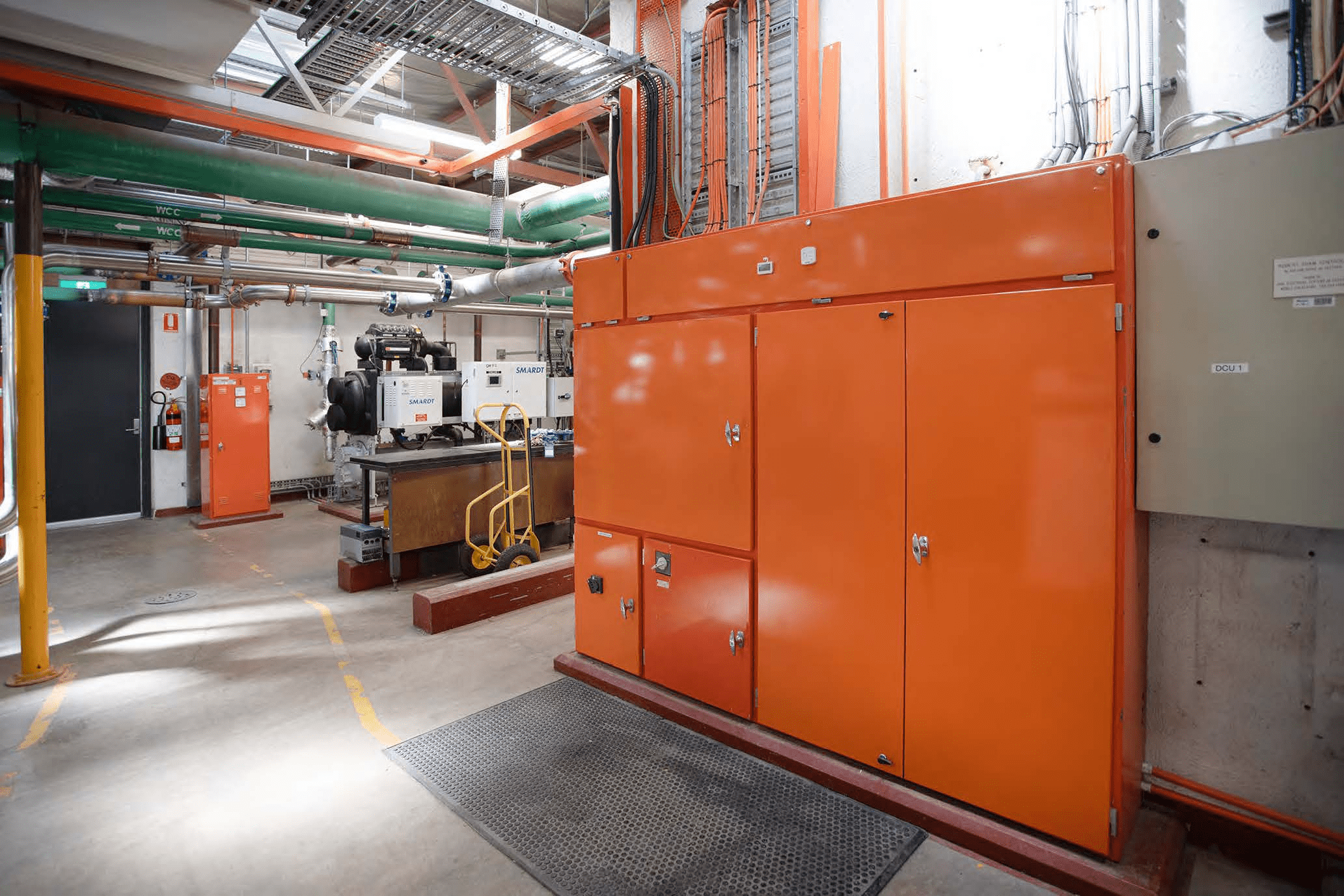
The integration of smart building technologies with BMS marks a significant advancement in enhancing cooling efficiency, particularly during the hot summer months. This synergy ushers in a new era of control, precision, and energy savings. Let's explore how this integration enhances cooling efficiency:
Internet of Things (IoT) Devices and Sensors: At the core of this integration are IoT devices and smart sensors, strategically placed to collect real-time data on various parameters like temperature, humidity, occupancy, and outdoor conditions. They continuously gather data, forming the foundation for informed decisions by BMS.
Real-Time Data Analysis: BMS leverages real-time data from IoT devices and sensors to create a dynamic and precise understanding of the indoor environment, accounting for both immediate conditions and external factors like weather forecasts.
Adaptive Control: BMS, armed with real-time data, dynamically adjusts cooling settings to meet the building's needs. For example, it directs cooling resources to occupied areas, responding swiftly to changes in occupancy and weather conditions.
Flexibility and Customisation: IoT integration offers unparalleled flexibility, allowing building managers to tailor cooling and environmental parameters precisely to occupants' needs, providing a personalized and responsive indoor environment.
Enhanced Energy Savings: BMS ensures that energy is used where and when needed, resulting in significant energy savings and cost reduction for building owners, all while maintaining occupant comfort.
In conclusion, the integration of smart technologies with BMS is a game-changer, enabling data-driven decisions for precise control, enhanced comfort, and substantial energy savings.
BMS Monitoring and Maintenance for Cooling Systems
Regular monitoring and maintenance of BMS is vital for uninterrupted cooling system performance. A well-maintained BMS reduces the risk of downtime and inefficiencies. Here's a checklist for BMS and cooling system maintenance:
Routine System Checks: Regularly assess the BMS for any signs of malfunction or irregularities to address issues promptly. This includes evaluating system logs, checking for unusual sensor readings, and verifying the performance of critical components. Timely identification of problems ensures that corrective measures can be taken before they lead to operational disruptions or inefficiencies.
Software Updates: Keep BMS software up to date to ensure optimal functionality and security. Regular updates not only introduce new features and improvements but also patch vulnerabilities that could be exploited by cyber threats. Keeping the software current is essential for maintaining the integrity and reliability of the BMS.
Sensor Calibration: Periodically calibrate sensors to maintain accurate data collection. Over time, sensor readings can drift or become less precise, affecting the BMS's ability to make informed decisions. Calibration ensures that the data collected remains reliable and consistent, enabling the BMS to operate at its full potential. Regular sensor maintenance is crucial for the accuracy of the system.
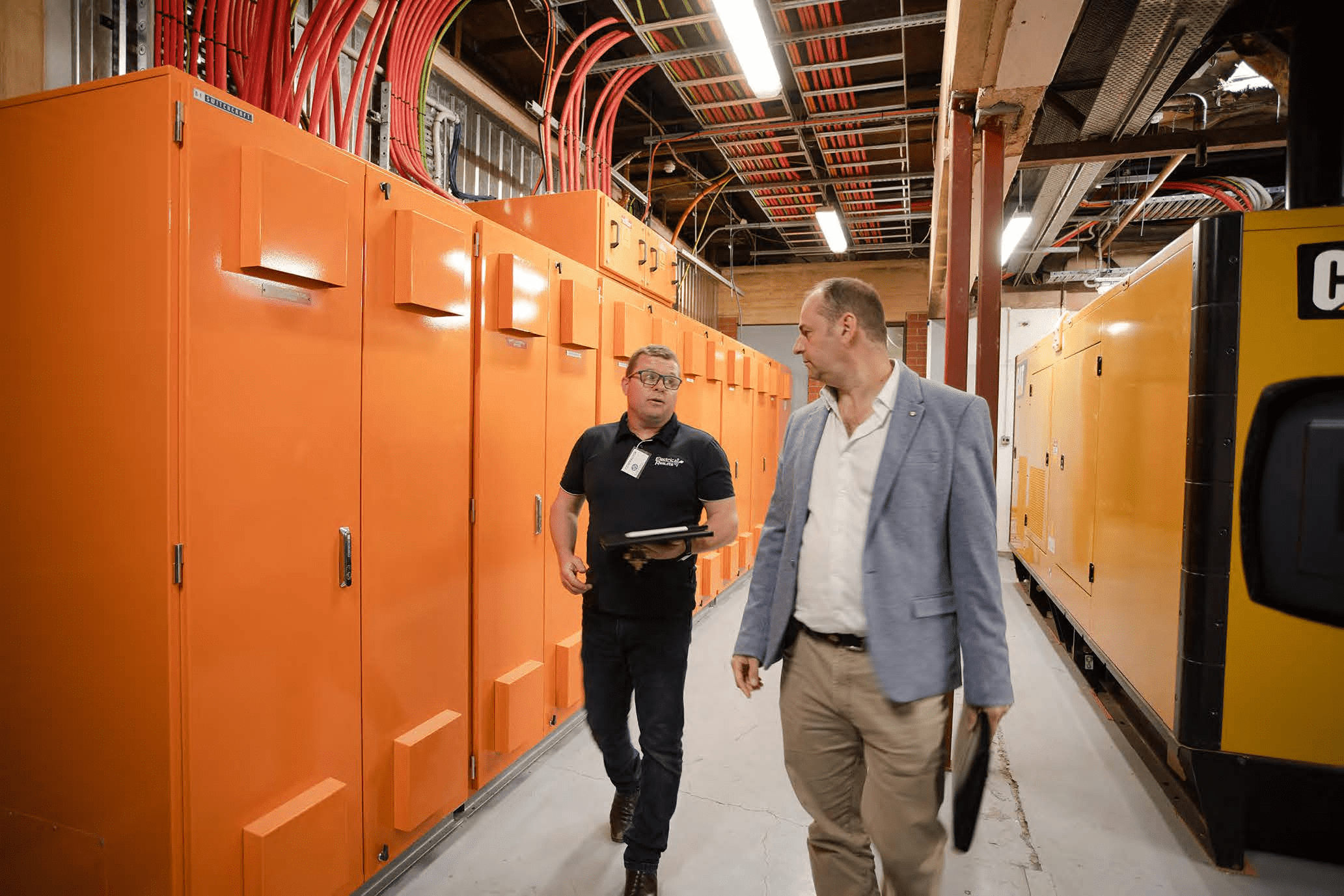
Cleaning and Servicing of HVAC Equipment: Clean and service HVAC components to prevent breakdowns and maintain efficiency. Routine maintenance, such as changing air filters, lubricating moving parts, and inspecting for wear and tear, not only extends the lifespan of the equipment but also ensures that it operates at peak efficiency, reducing energy consumption and avoiding costly emergency repairs.
Backup Power Supply Testing: Verify the functionality of backup power supplies to ensure uninterrupted BMS operation during outages. Regular testing of backup power sources, such as generators and uninterruptible power supplies (UPS), guarantees that the BMS remains operational in the event of power disruptions. This reliability is crucial for maintaining building comfort, security, and efficient cooling even when external power sources falter.
Benefits of Efficient Cooling with BMS
Efficient cooling with a Building Management System (BMS) delivers a plethora of advantages that span economic, environmental, and human comfort dimensions:
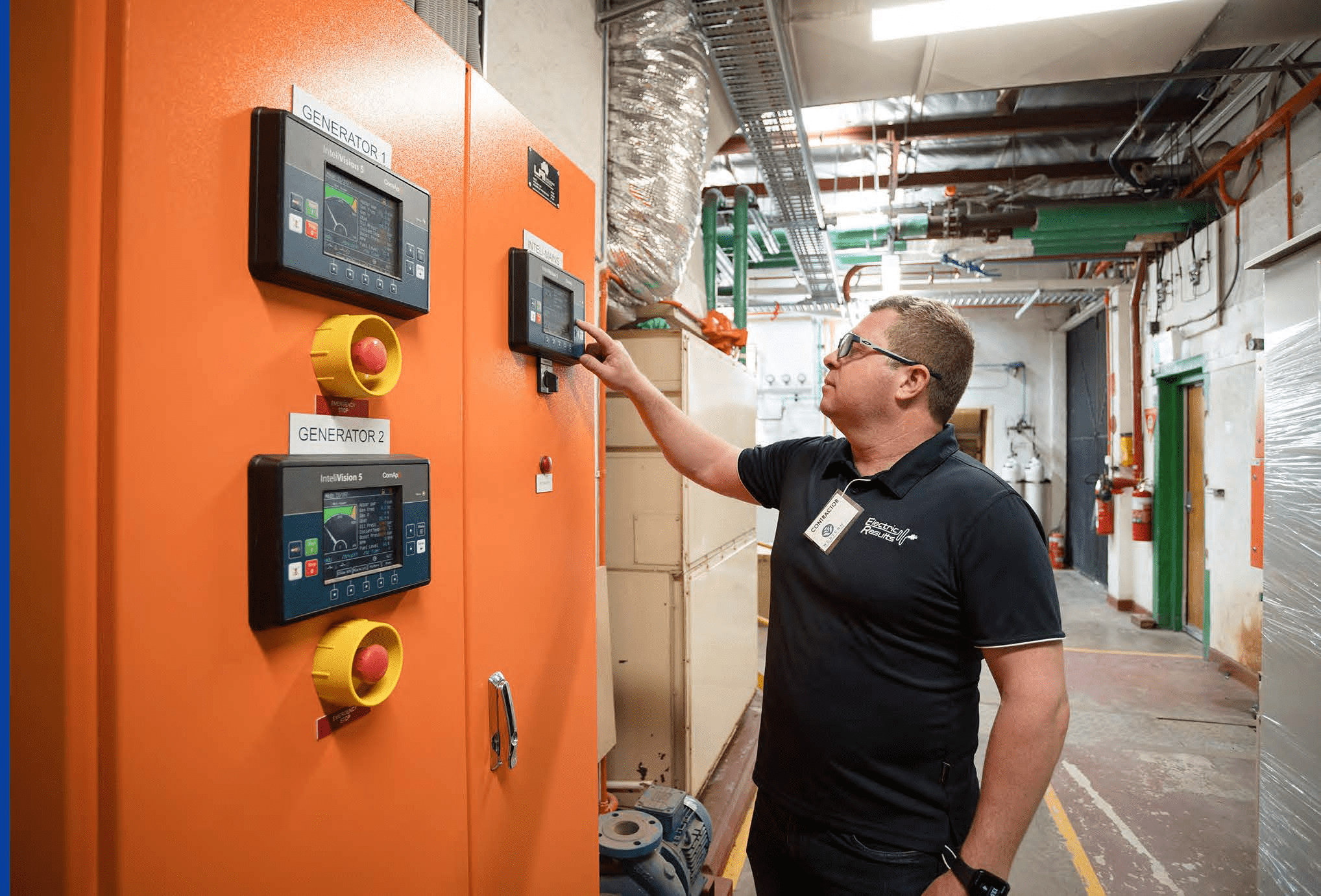
1. Cost Savings:
The foremost benefit of efficient cooling through a BMS is the significant reduction in energy consumption, translating to lower electricity bills for building owners. By fine-tuning cooling operations to meet specific demands and avoiding unnecessary energy wastage, BMS ensures that every unit of energy is put to good use. This efficient resource allocation not only decreases operational costs but also minimises the wear and tear on cooling equipment, reducing maintenance and replacement expenses in the long run.
2. Sustainability:
A BMS's ability to curtail energy consumption also contributes to sustainability in building operations. Lower energy use results in a reduced carbon footprint, aligning with environmental goals to combat climate change. By minimising the energy-related impact of cooling systems, BMS promotes the responsible use of resources and helps the building sector become more eco-friendly. Sustainability initiatives that focus on reduced energy consumption and lower emissions become more attainable with the aid of BMS technology.
3. Improved Comfort:
Efficient cooling facilitated by a BMS enhances the comfort of building occupants in various ways. The BMS ensures consistent indoor temperatures by preventing overcooling or overheating, thus eliminating discomfort caused by temperature fluctuations. Moreover, it actively monitors and maintains air quality, ensuring that the air is clean and free from pollutants, promoting overall occupant well-being. By optimising the indoor environment, BMS fosters a pleasant and healthy atmosphere, enhancing the productivity and satisfaction of building occupants.
For Optimal BMS Results, Choose Electric Results
Electric Results is proud to be your unwavering ally in the new era of comfort and resource optimisation, where BMS takes the spotlight. Our commitment to delivering exceptional results and surpassing client expectations aligns perfectly with the pursuit of enhanced cooling efficiency. We understand the urgency for prompt, reliable, and value-driven solutions, and our unique approach characterised by a strong client relationship sets us apart. You can count on us to be accessible, affordable, and responsive, ensuring that you never have to wait long for a solution.
As South Australia's exclusive Tier 1 BMS systems integrator for KMC Controls Electric Results partners with you to achieve optimal cooling efficiency. Contact us today to experience the Electric Results difference and create a more comfortable, efficient, and successful future. Our top priority is your satisfaction, and we are here to deliver results that make you choose us because you want to, not because you have to.

